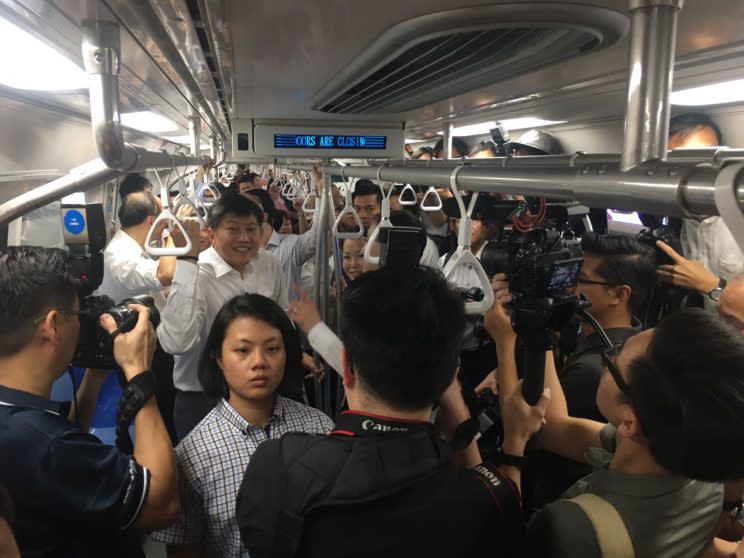Shorter commute times for workers in Tuas with Tuas West Extension: Ng Chee Meng

The Tuas West Extension (TWE) will cut down travelling time by 30 minutes for those working in Tuas when it opens on Sunday (18 June).
According to Second Minister for Transport Ng Chee Meng who spoke at the opening ceremony of the TWE on Friday (16 June), this “constitutes travel time savings of more than 30 per cent”.
“For example, a commuter staying in Woodlands and going to work at Tuas West will find his journey shortened from one and a half hours currently, to under an hour,” said Ng.
The TWE is made up of four stations – Gul Circle, Tuas Crescent, Tuas Wet Road and Tuas Link, and is expected to serve 100,000 commuters daily. It is an extension of the East-West Line, which runs from Pasir Ris to Joo Koon.
It is connected to the Tuas and Jurong industrial estates by two new bus services, 247 and 248, and four amended bus services, 192, 254, 182M and 193.
The TWE is also a significant engineering achievement, as it is Singapore’s first integrated rail road viaduct. The TWE also has the highest elevated station in the MRT network, with Gul Circle standing at 33m above ground, about the height of a 10-storey HDB block.
Commuters whom Yahoo Singapore spoke to at the open house all agreed that the extension will bring about convenience.
For 53-year-old Mon Liew, who works as a sales executive at a company in Gul Circle, it currently takes up to one hour for her to travel to work from Jurong West.
“With the Tuas West extension, maybe when we go work, we can save a lot of time. By MRT, it will be half an hour,” said Liew.
“Our company can also save cost by cutting the private bus, as we can now take the MRT to work in the future.”
Bhupesh Kurade, a 43-year-old steel trader, says the extension will bring a better connection to that area of Singapore because Tuas currently has “limited public transport”.
“I work in Pioneer and I’m very interested to look at this place,” Kurade said.
“I’ve been always telling my friends that Tuas is the next future of Singapore. Most of the manufacturing companies are here and for them, it’s going to be of great convenience,” said Kurade.
Student Liang Ge Song, 18, who was invited to the open house, said that the design of the stations was a major attraction for him.
“The engineering work, the stations’ design, it’s a major milestone for LTA (Land Transport Authority),” said Liang, who was at the open house with five other friends.

Upcoming plans
Apart from the TWE, commuters can also look forward to the opening of the Downtown Line 3 later this year.
Ng added that construction of the Thomson-East Coast Line (TEL) and Circle Line 6 are currently “going full steam ahead”.
He also revealed that the LTA is embarking on two other major projects to improve rail connectivity for Singaporeans living and working in the western part of Singapore.
The first is the Cross Island Line (CRL) that will link Jurong, West Coast and Clementi all the way to Changi Airport. Detailed engineering studies and site investigations works are currently ongoing.
The second is the Jurong Region Line (JRL), which is expected to be completed around 2025, with a Tengah site gazetted for the depot already. Site preparation works are ongoing, and construction of the depot will commence around 2019.
“Our fundamental objective for all our rail projects is to provide public transport which is so convenient, comfortable and reliable, that Singaporeans will go car-lite,” said Ng.
At present, the proportion of commuters taking public transport during the morning peak hours has been “growing steadily”, Ng said. According to Ng, it was 63 per cent in 2012. “By 2016, this had grown to an estimated 67 per cent,” said Ng.
“With the DTL3, TEL, and later on JRL and CRL, it should reach 80 percent by 2030,” Ng added.



